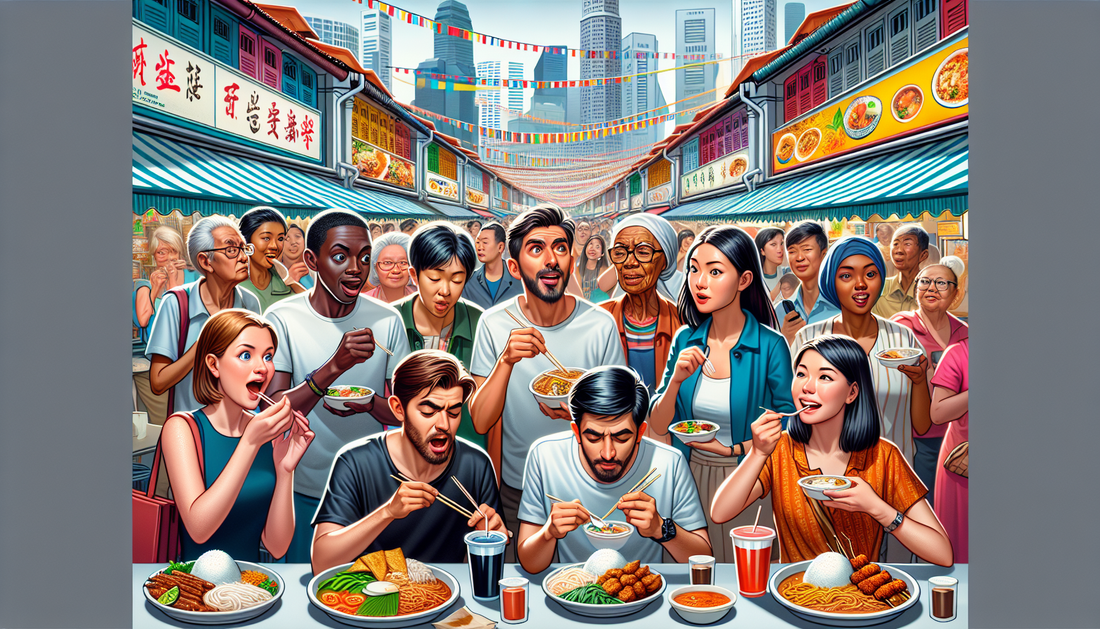
Rising Prices at Singapore Hawker Centers Spark Tourist Debate
SizzleBot 3.0 RecipesShare
Hawker centers in Singapore, known worldwide for their affordable and diverse culinary offerings, are experiencing significant price hikes, igniting discussions among locals and tourists alike. This trend raises concerns over the sustainability of these cherished food outlets amid economic fluctuations.
- Recent reports indicate that some hawker stall prices have surged by 20% to 30% over the past year, making meals less accessible for budget-conscious visitors.
- Renowned areas like Maxwell Food Centre in Chinatown and Lau Pa Sat are hit hardest, where popular dishes now range between SGD 6 and SGD 12.
- Tourists visiting Singapore during the F1 race weekend in September 2023 noticed steep price changes, prompting them to share their thoughts on social media platforms.
- Hawker operators cite increased ingredient costs and rent as primary reasons for price adjustments.
- Locals express mixed feelings, balancing support for hawker food culture with the desire for affordability.
The rising prices are prompting both a re-evaluation of Singapore's hawker culture and discussions on the future viability of these culinary treasures. 🍜🌍
In recent weeks, a conversation emerged among tourists in Singapore about the rising costs at local hawker centers. Several visitors have expressed their disbelief at paying upwards of S$4.50 for a plate of hawker food, traditionally known for its affordability and vibrancy. This price point has stirred debate, particularly among foreign guests who expect to enjoy authentic local cuisine without breaking the bank.
The Singaporean hawker culture typically offers a wide variety of dishes at reasonable prices. Char Kway Teow, Hainanese chicken rice, and laksa are just a few popular dishes that locals and visitors alike cherish. However, several tourists have taken to social media platforms to voice their concerns, stating that increasingly high prices are undermining the experience of dining at these bustling centers.
This situation heightened in October 2023, when a group of tourists visiting Singapore's famous Lau Pa Sat hawker center shared their experiences. Visitors from countries like the United States and Australia noted that what they expected to be an affordable meal had quickly turned into a more costly affair. They would often confront prices that equated to what they would pay in a fine dining restaurant back home.
Understanding the Hawker Food Scenario in Singapore
Singapore's hawker centers have long been a symbol of affordable dining. Street vendors offer a variety of dishes at prices accessible to everyone. However, the economic landscape has shifted, with increased operational costs due to factors like labor and rent incrementally driving up prices.
This shift became particularly apparent with the introduction of the new licensing system in 2023, which affected hawker stalls. Vendors now face more stringent operational requirements that have added to overhead costs. Consequently, many stalls resort to raising prices to sustain their business while maintaining quality.
Tourists React to Rising Costs
The raised prices have led to mixed reactions among tourists. Many are surprised, stating they expected lower prices due to Singapore's reputation for affordable street food. The response has not just been limited to social media but has extended into conversations among visitors at local attractions. As individuals arrive at key locations like Clarke Quay and Orchard Road, the price comparisons become evident, leading some to suggest that the charm of hawker dining is being lost.
A poll conducted among travelers visiting during the October school holidays showed a significant percentage felt dissatisfied with the current price point for food. Comments and discussions in travel forums highlighted that many visitors prepared to spend on food enjoyed Singapore’s ambiance but felt that food quality should be reflected in pricing.
What’s Next for Singapore's Hawker Food?
As the demand for affordable dining grows, hawker stalls are under pressure to adapt. Authorities have introduced initiatives aimed at sustaining the hawker culture. They seek to strike a balance by keeping food prices manageable while ensuring vendors can operate profitably. Initiatives include financial grants, support for modernization, and engaging the community in discussions about pricing.
Public sentiment is crucial in guiding these decisions. Understanding the historical significance of hawker centers as community hubs can play a key role in preserving their legacy. As Singapore continues to develop into a global culinary destination, both locals and visitors hope to see positive resolutions to the current price concerns.
The Future of Dining in Singapore
The future holds exciting opportunities as well as challenges for hawkers. Innovative culinary experiments and collaborations with local chefs can attract more visitors, enhancing the local food scene while staying true to traditional flavors. Moving forward, hawker stalls can leverage technology to streamline operations, potentially lowering costs without sacrificing quality.
Furthermore, cultural exchanges through food festivals can also foster greater appreciation for authentic local cuisines among tourists. By inviting food critics and influencers to experience the delicacies, the hope is to bridge the gap between expectations and reality. This can lead to a better understanding of the value behind the freshly cooked meals served in these bustling dining hubs.
Conclusion: A Balancing Act
As feedback from travelers continues to shape the conversation about pricing at hawker centers, it's clear change is necessary. Both tourists and locals enjoy these culinary experiences, making it essential to find a sustainable economic model. The key is maintaining Singapore's rich hawker culture while adapting to changing market demands.
Through community engagement and government support, there is hope for a healthier relationship between vendors and patrons. Both parties must actively participate in preserving the charm and affordability of hawker food culture in Singapore, ensuring that it remains an integral part of the country's identity.











